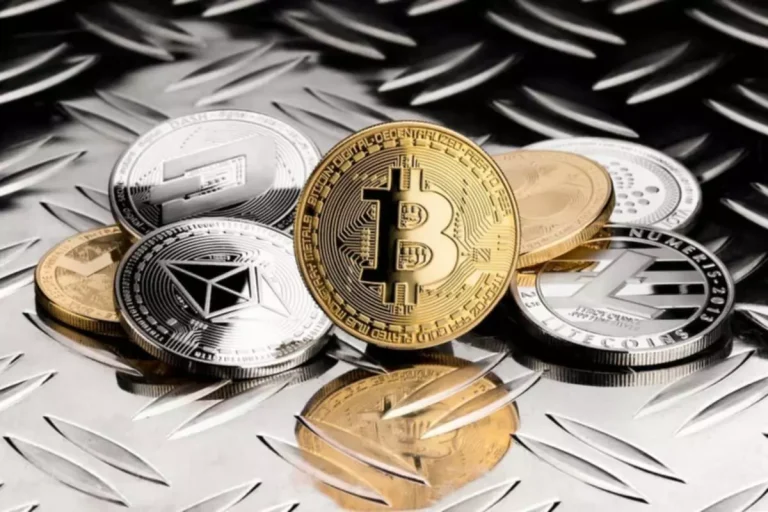Content
Stablecoins enable more efficient cross-border transactions and remittances reducing costs and increasing speed compared to traditional banking systems. They also play a vital role in decentralized finance applications, serving as collateral for lending and borrowing platforms, liquidity in decentralized exchanges and as a means of earning interest through yield farming. By providing stability and accessibility, stablecoins are helping to drive broader adoption of blockchain technology and cryptocurrencies in https://www.xcritical.com/ both retail and institutional settings. In crypto-collateralized systems, the reserves are cryptocurrencies locked in smart contracts on the blockchain. These over-collateralized positions account for potential price volatility of the backing assets.
What is the regulatory landscape for stablecoins?
They provide a reliable AML Risk Assessments unit of account within the crypto ecosystem, allowing traders and investors to quickly move in and out of positions without converting to fiat currencies. This function is particularly important during periods of high market volatility, offering a “safe harbor” for crypto assets. Stablecoins are cryptocurrencies designed to maintain a stable value relative to a specific asset or basket of assets. Unlike traditional cryptocurrencies such as bitcoin or ethereum, which can experience significant price fluctuations, stablecoins aim to provide a consistent store of value and medium of exchange. This stability is typically achieved through various mechanisms, including asset-backing, algorithmic control or a combination of both. To help combat disruptions, liquidity providers (LPs) play a crucial role in maintaining the stability of stablecoin markets.

Global Dollar Network and USDG: Reshaping the Future of Stablecoins
Additionally, its role in DeFi highlights its versatility, offering a dependable medium for trading and other use cases in on-chain ecosystems. The report first discusses key features of stablecoin arrangements that are relevant from the perspective of cross-border payments. Third, it analyses how stablecoin arrangements might interact and coexist with other payment methods. Fourth, it evaluates the potential impact of their use on the monetary policy, financial stability and payment functions of central banks. Throughout the report it acknowledges the importance of jurisdictional differences regarding regulatory frameworks and macroeconomic conditions. Wait for multiple network confirmations on large transactions to reduce what are stablecoin payments the risk of double-spending attacks.

The measure of a good stablecoin
However, UST faced significant challenges and after losing its peg, both cryptocurrencies and the Terra blockchain collapsed. For example, if a stablecoin is pegged to the US dollar, an oracle will provide the current exchange rate between the stablecoin and the dollar. This data is then used by the smart contracts to adjust the supply of the stablecoin, if necessary, to maintain its value.
What is PYUSD (PayPal USD)? PayPal’s stablecoin explained
- Transactions happen super fast, which is a game-changer compared to traditional banking systems that can be slow, especially for cross-border payments.
- For these reasons, we are looking closely at the idea of a central bank digital currency for the UK.
- This risk is more prevalent when using stablecoins, since there is more likely to be a price divergence when one digital asset is restricted in price movement.
- Unlike other cryptocurrencies that experience significant price fluctuations, stablecoins are designed to provide price stability by being pegged to hard dollars on a one-for-one ratio.
- However, UST faced significant challenges and after losing its peg, both cryptocurrencies and the Terra blockchain collapsed.
Stablecoins offer a blend of the stability of traditional currencies with the advantages of blockchain technology, including lower costs, faster transactions, and enhanced security. As these companies continue to innovate and integrate stablecoin payments into their services, we can expect even more widespread adoption and new use cases in the coming years. Stablecoins are not just a trend; they are becoming a fundamental part of the modern payment landscape, driving efficiency and inclusivity in the global economy. Crypto-backed stablecoins are often seen to cater to the decentralized finance ecosystem, as they often enable users to mint stablecoins on their own without relying on a centralized authority.
One of the most common pegs used is the US dollar, where one unit of a stablecoin is designed to be worth $1 USD. The purchase of USDCs with foreign providers may require the contracting, by the client, of foreign exchange transactions with institutions authorized to operate in the Brazilian foreign exchange market. The client is aware that Circle does not operate in the Brazilian foreign exchange market and does not offer services related to it. Circle is only a provider of the software and technology related to the issuance of USDCs and does not engage in any regulated financial activity in Brazil in connection with the services it provides. This theoretical stability mechanism depends heavily on market participants acting in predictable ways and on the stability of the secondary token.
The future of stablecoin payments is bright, with ongoing innovations and increasing adoption promising to transform how we conduct financial transactions. More than 25% of businesses have started accepting stablecoins for payments, showcasing their growing trust and reliance on this new technology. These categories provide essential insights into their roles in modern digital payment systems and highlight their diverse applications. Each type has unique mechanisms for maintaining price stability, making them suitable for different use cases. Stablecoins merge blockchain efficiency with fiat stability, establishing themselves as a standard digital payment tool that bridges traditional and modern financial transactions. Certain governments have expressed concern about the potential for stablecoins to disrupt traditional financial systems, evade regulations, and facilitate illegal activities.
Stablecoins are a type of cryptocurrency tied to the value of a traditional fiat currency such as the dollar. Some of the biggest stablecoins include USDC, which is backed by Circle and Tether, which is backed by cryptocurrency firm iFinex. While one cryptocurrency firm, Binance, said earlier this year that it will stop supporting its stablecoin this week, another company, Ripple, said it will issue a new stablecoin this week. Those whispers are now crescendoing into a cheer as a new presidential administration prepares to take office with a receptive view of digital currencies. This primer is intended to give industry professionals and others a better understanding of the part these digital assets play in payments and commerce.
Essentially, every stablecoin is a cryptocurrency, the value of which is pegged to that of a fiat currency. The absolute majority of stablecoins are tied to mainstream currencies such as the US dollar and euro. Basically, they are backed by actual reserves of fiat currencies, commercial papers, bonds, or other cryptocurrencies. At the same time, there are stablecoins which are decentralized and thus purely algorithmic. Visa, one of the world’s largest payment networks, has embraced stablecoins to streamline cross-border payments. By integrating stablecoins like USD Coin (USDC) into its platform, Visa enables businesses and consumers to send and receive payments quickly and securely.
Dtcpay had recently announced that it will be making a strategic shift to exclusively support stablecoins for all its payment services starting in January 2025. “Bitwage greatly simplifies payments for many of our users, and we’re excited to be their partner at such an exciting time.” “Bitwage´s ability to manage international payment operations and challenges while providing timely and reliable support has been invaluable.” MoonPay allows you to easily buy stablecoins including USDT, USDC, DAI, and PYUSD using your credit card or any other preferred payment method. On one hand, clear regulatory guidelines can provide legal certainty and encourage broader adoption by institutions. On the other hand, overly restrictive regulations could stifle innovation and limit the adoption of the tokens in certain markets.
An example of a cross-border payment is when someone sends money to family or friends in another country. But, because stablecoins have a stable value, people may start using them more to pay for a wider range of things. Stablecoins are growing in popularity and finding particular appeal in global markets as regulation clarifies and use-cases expand. There are over 90 million global wallets holding stablecoins, up over 15% from 2023 into 2024 according to data from RWA.
And depending on the payment method, those settled transactions are still open to chargeback and dispute issues for days. Stablecoins reduce the role of intermediaries in the current financial system and support direct transactions between merchants and consumers, reducing intermediary costs. Because stablecoins are cryptographically secure, users can settle transactions almost instantaneously without double-spending or other problematic settlement facilitation. While stablecoins present significant benefits, users should be aware of potential risks, including regulatory uncertainties and technical vulnerabilities. As the stablecoin ecosystem evolves, it’s likely to play an increasingly important role in global finance, offering new opportunities for financial inclusion and innovation. Stablecoins form the backbone of many DeFi protocols, serving as a stable unit of account for lending, borrowing and yield farming.
Depending on the type of stablecoin in question, issuers will employ a combination of collateralization, algorithmic controls, and reserve systems. Conversely, when the stablecoin’s price falls below the target, users can burn the stablecoin to receive the variable token, reducing the stablecoin’s supply and pushing the price back up. This article explores stablecoin fundamentals, types, use cases, and the transformative potential of stablecoins in the financial ecosystem. USDC, also known as USD Coin, is a coin which was issued by CENTRE in collaboration with Circle and Coinbase.
So, before deploying stablecoin payments, companies need to thoroughly investigate the asset they plan on using. This is why businesses that, due to crypto prices’ fluctuations, are fearful of integrating crypto payments can opt for stablecoins as a safe store of value option. Basically, by getting stablecoin payments, businesses will be able to avoid losing a share of their crypto holdings because of the market volatility. Similarly, some customers may also prefer paying in stablecoins due to the same reason. As demand for stablecoins grows, particularly as cash use experiences a historic low, more individuals and businesses are considering these assets as payment alternatives.
Owning stablecoin assets allows users to remain in the cryptocurrency ecosystem without needing to cash out to fiat money during periods of market volatility. This can occur when the price of one cryptocurrency diverges from the other paired token by the time the user withdraws funds from the liquidity pool (thus making the loss permanent). This risk is more prevalent when using stablecoins, since there is more likely to be a price divergence when one digital asset is restricted in price movement.

 English
English
